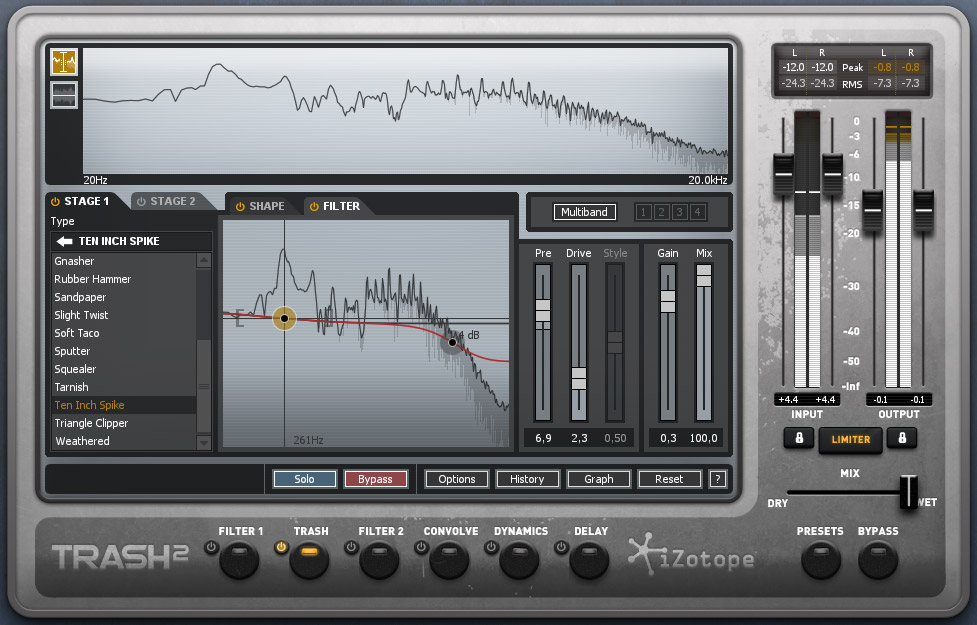

The most obvious place to start is with the distortion stage itself. We can’t work out how many combinations of different routings this all adds up to, so let’s just say that it’s a lot… Get dirty You can also choose to run effects in parallel, increasing the variety of sounds on offer. Being able to bypass individual stages of the chain directly from any tab means it’s quick and easy to decide which combination works best for a given sound.įurthermore, by selecting ‘Graph’ above the navigation buttons, it’s possible to change the signal flow through the various effects, opening up some really interesting routing options. The main navigation buttons located along the bottom of the window provide an easy and accessible way around the stages in the effect chain, switching between tabs for the six effect modules – filter 1, distortion (‘Trash’), filter 2, convolve (which we’ll explain later), dynamics and delay. More importantly, the layout is clear and logical. This time the emphasis is less on making the plugin look like a vintage hardware effect unit and more on providing an aesthetically pleasing mixture of clean lines and muted, metallic colours. The most immediately striking difference from the original is the GUI itself, which has had a much-needed update.
IZOTOPE TRASH 2 DEMO UPDATE
With such a long time between updates, regular users of both Trash and other iZotope products are eager to find out what additions this update brings. That’s a near-lifetime in the fast-paced world of music software. It’s difficult to believe that iZotope released the original version of its distortion modelling plugin Trash nearly ten years ago. We put the newly updated distortion plugin to the test. Version 1 of iZotope’s Trash lasted ten years without a major update.


 0 kommentar(er)
0 kommentar(er)
